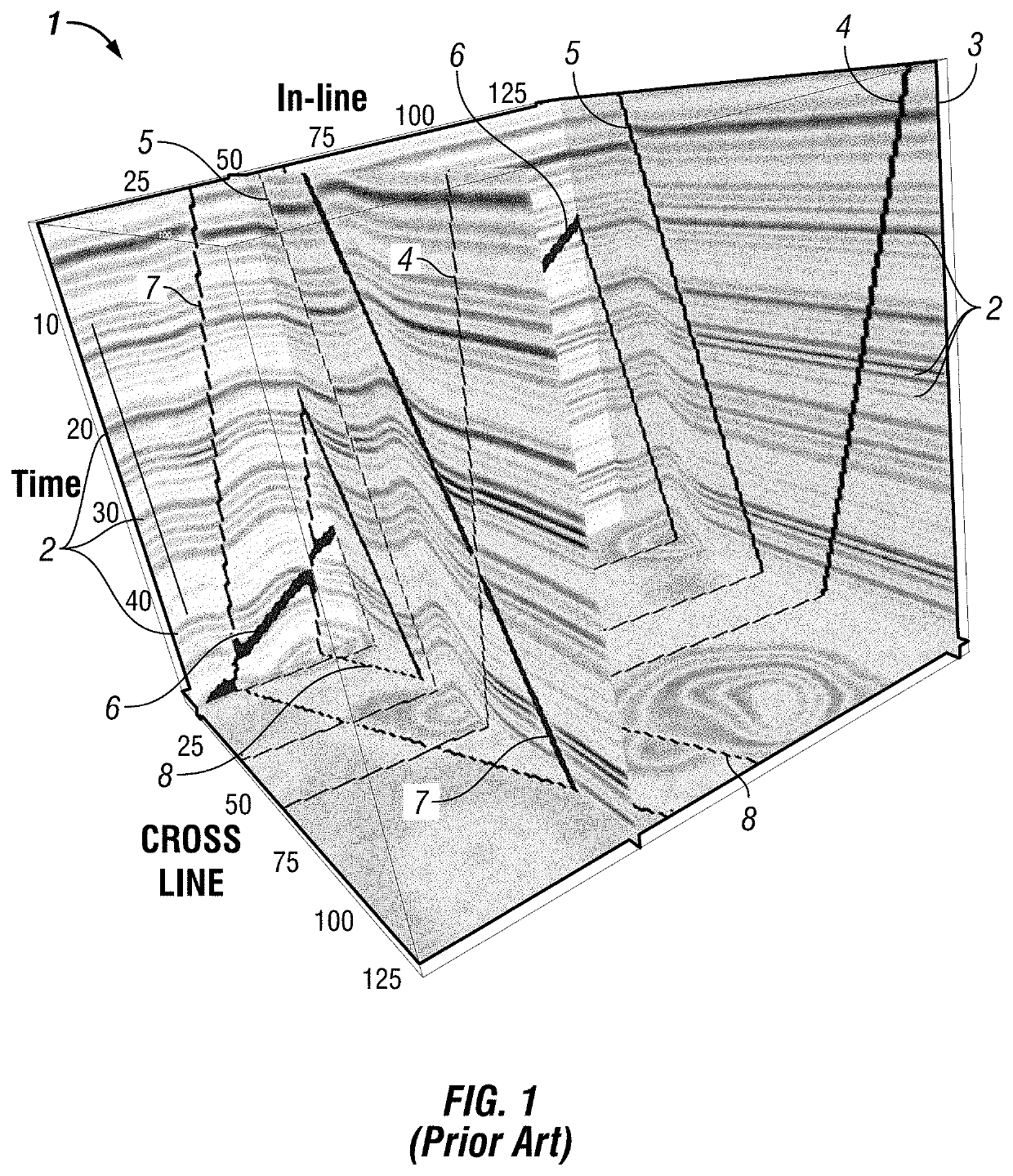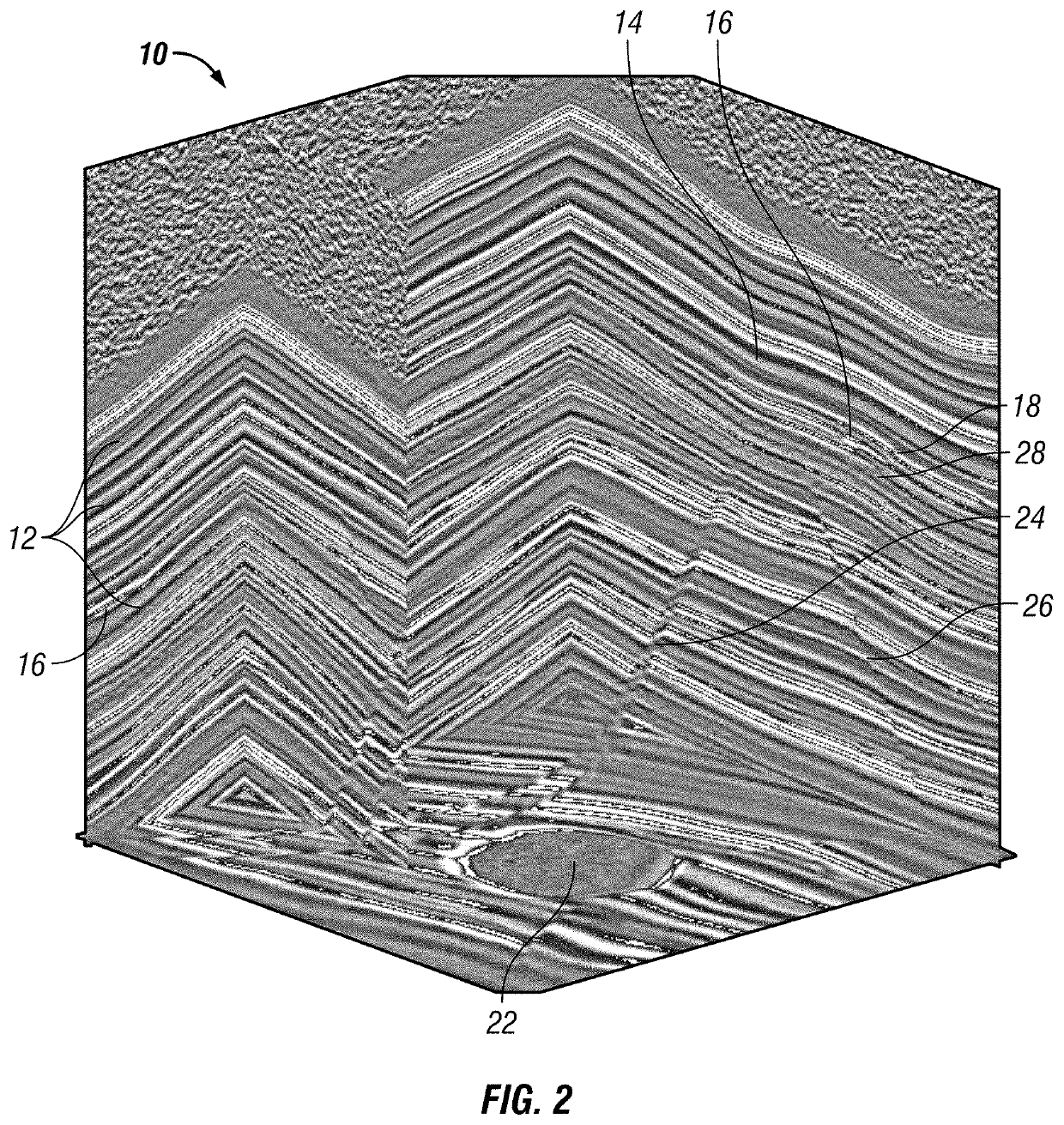Synthetic modeling with noise simulation
a noise simulation and synthetic modeling technology, applied in the field of backpropagation enabled processes, can solve the problems of human error or bias in the interpretation of field-acquired seismic data, the difficulty of obtaining field-acquired seismic data, and the difficulty of managing field-acquired data
- Summary
- Abstract
- Description
- Claims
- Application Information
AI Technical Summary
Benefits of technology
Problems solved by technology
Method used
Image
Examples
Embodiment Construction
[0011]The present invention provides a method for producing a synthetic model for training a backpropagation-enabled process for identifying subsurface features. Once trained, the process can be applied to field-acquired seismic data with improved identification of a subsurface geologic feature.
[0012]By using data from the synthetic models to train a backpropagation-enabled process, the effectiveness and accuracy of the training is significantly improved. Examples of backpropagation-enabled processes include, without limitation, artificial intelligence, machine learning, and deep learning. It will be understood by those skilled in the art that advances in backpropagation-enabled processes continue rapidly. The method of the present invention is expected to be applicable to those advances even if under a different name. Accordingly, the method of the present invention is applicable to the further advances in backpropagation-enabled process, even if not expressly named herein.
[0013]Th...
PUM
 Login to View More
Login to View More Abstract
Description
Claims
Application Information
 Login to View More
Login to View More - R&D
- Intellectual Property
- Life Sciences
- Materials
- Tech Scout
- Unparalleled Data Quality
- Higher Quality Content
- 60% Fewer Hallucinations
Browse by: Latest US Patents, China's latest patents, Technical Efficacy Thesaurus, Application Domain, Technology Topic, Popular Technical Reports.
© 2025 PatSnap. All rights reserved.Legal|Privacy policy|Modern Slavery Act Transparency Statement|Sitemap|About US| Contact US: help@patsnap.com


